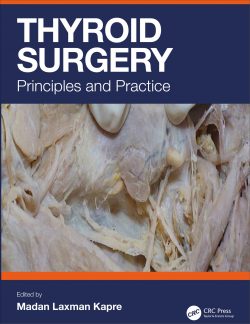This unique guide describes colorectal surgery procedures using medical terminology and anatomical terms originating from embryology.
In the last decade, laparoscopic procedures in gastrointestinal surgery have been enhanced and their safety has significantly improved. With the number of cases of colorectal cancer surgery increasing and laparoscopic surgery no longer considered a specialized surgery, the recognition of the correct anatomy is vital in these procedures. Unfortunately, however, the understanding of clinical anatomy is frequently separate from that of basic surgical concepts. Initially, the dissecting layer should be presumed to derive from the fascial anatomy based on embryological recognition. Furthermore, the techniques currently being used by surgeons should be described in sufficient detail and the appropriate anatomical terms should always be used. In view of this, this valuable monograph benefits gastrointestinal surgeons and general surgeons who are involved in the treatment of colorectal cancer.
Part 1. Basic Principles
1.- Definition of the terminology
2.- Peritoneal configuration, body wall, and intestinal rotation in foetal life
3.- Intestinal rotation and peritoneum
4.- Relationship between the stomach and transverse colon – Particular relationship at the centre of the transverse colon
5.- The presence of histological fascia
6.- Vascular anatomy and lymph node dissection of the colon
7.- Fascial anatomy of the umbilicus and the method for insertion of Hasson’s cannula
Part 2. Basic Approach
8.- Basic approach for colorectal cancer
<9.- Basic approach for the operation
Part 3. Laparoscopic Sigmoidectomy
10.- Fundamentals related to the sigmoid colon
11.- Resection range and degree of the lymph node dissection
12.- Fascial composition and fusion fascia of the descending colon and sigmoid colon
13.- Operative procedures
14.- Dissection and mobilisation of the sigmoid colon with the lateral approach
15.- How to understand the fascial composition
Part 4. Laparoscopic Low Anterior Resection of the Rectum
16.- Resection range and degree of the lymph node dissection
17.- Fascial composition and fusion fascia of the rectum
18.- Operative procedures
19.- Intersphincteric resection of the rectum
20.- Fascial composition of the pelvis
Part 5. Laparoscopic Abdominoperineal Resecrion of the Rectum
21.- Stoma site marking and preoperative treatment
22.- Operative procedures
23.- Concept of abdominoperineal operation
Part 6. Laparoscopic Right Colectomy
24.- Resection range and degree of lymph node dissection
25.- Fascial composition of the right-side colon
26.- Operative procedure
27.- Clinical anatomy in the medial-retroperitoneal approach for right colon cancer
Part 7. Laparoscopic Left Colectomy
28.- Resection range and degree of the lymph node dissection
29.- Fascial composition and fusion fascia of the left colon and the splenic flexure of the colon
30.- Operative procedures
31.- Mobilisation of the splenic flexure of the colon
Part 8. Laparoscopic Subtotal Proctocolectomy
32.- Resection range and degree of lymph node dissection
33.- Operative procedures.
“This book endeavors to explain laparoscopic colorectal surgery from the standpoint of anatomic and embryologic planes. It is intended for novice surgeons/surgical trainees … . The purpose is the education of young surgeons and surgeon trainees about the anatomic and embryologic planes to aid in colorectal cancer surgery.” (Irena Gribovskaja-Rupp, Doody’s Book Reviews, April, 2017)
Makio Mike, M.D., Ph.D.
Chief of the Department,
Department of Gastrointestinal Surgery,
Kameda Medical Center, Kamogawa, Japan
This unique guide describes colorectal surgery procedures using medical terminology and anatomical terms originating from embryology.
In the last decade, laparoscopic procedures in gastrointestinal surgery have been enhanced and their safety has significantly improved. With the number of cases of colorectal cancer surgery increasing and laparoscopic surgery no longer considered a specialized surgery, the recognition of the correct anatomy is vital in these procedures. Unfortunately, however, the understanding of clinical anatomy is frequently separate from that of basic surgical concepts. Initially, the dissecting layer should be presumed to derive from the fascial anatomy based on embryological recognition. Furthermore, the techniques currently being used by surgeons should be described in sufficient detail and the appropriate anatomical terms should always be used. In view of this, this valuable monograph benefits gastrointestinal surgeons and general surgeons who are involved in the treatment of colorectal cancer.
Elaborates on laparoscopic colorectal cancer surgery
Provides detailed descriptions of colorectal surgery procedures, using medical terminology and anatomical terms originating from embryology
Deepens understanding of the embryological anatomy of the fascial composition





